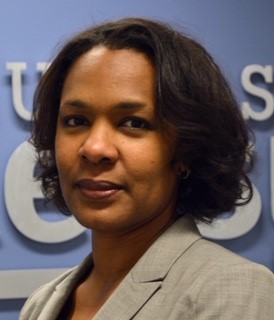Equidad in the Clean Energy Transition
By Angela M. Manso, National Outreach Director, Natural Resources Defense Council (NRDC)

Angela M. Manso, National Outreach Director, Natural Resources Defense Council (NRDC)
Frontline communities, overwhelmingly low-income, Native, and communities of color, are the first to experience the worst consequences of climate change. According to the Environmental Protection Agency (EPA), Hispanic or Latino individuals are 10% more likely to currently live in areas with the highest projected increases in childhood asthma diagnoses with 2° Celsius of global warming. And yet, our country’s clean energy transition to date has not been equitable, particularly for Hispanic communities. The Greenhouse Gas Reduction Fund (GGRF) could allow for a more inclusive energy transition with more equitable outcomes and economic, health, and resilience opportunities. The Inflation Reduction Act, a signature achievement of the Biden Administration on climate, established the Fund with an initial investment of $27 billion. This first-of-its-kind program at EPA was designed to rapidly deploy low- and zero-emission technologies and accelerate the transition to an equitable clean energy economy. It upholds President Biden’s Justice40 Initiative to advance environmental justice and goes even further by dedicating almost 70 percent of program funds to make critical investments in communities underserved by traditional financial markets. This is a big deal.
It’s a big deal because these same communities have little to no access to green financing, which means they’re not able to take advantage of the benefits of low- and zero-emission technologies like improved health and energy cost savings. These disparities show up in energy burdens, the percentage of household income used to pay for energy bills. According to the American Council for an Energy Efficient Economy, “low-income households, Black, Hispanic, Native American, renters, and older adults all have disproportionately higher energy burdens than the national median household.” The median energy burden for Hispanic households alone is 20% higher than that for white (non-Hispanic) households according to the U.S. Department of Energy.
Historically racist policies and practices such as redlining and racial and ethnic covenants have excluded Hispanics too from building wealth for generations. The Fair Housing Act of 1968 declared race-based redlining illegal, and Congress passed the Community Reinvestment Act (CRA) in 1977 to address discrimination in access to credit. Still, Latino communities have continued to suffer from a lack of investment that has “constrained opportunity,” per the Department of Treasury. The CRA pushed lenders to reinvest in the communities in which they already operate and expand access to credit and banking services. As a result, community development financial institutions (CDFIs) sprung up to fill gaps in access to financing for economically disadvantaged communities and promote community development.
The GGRF builds on the successful model and track record of CDFIs, as well as green banks, credit unions, and other green and community-based lenders. It dedicates a sizable portion of funding to expand the capacity of community lenders to provide financing for clean energy projects in frontline communities.
The program has three objectives: to reduce emissions of greenhouse gases (GHG) and other pollutants, deliver benefits of GHG- and air pollution-reducing projects to communities across the United States and its territories, and mobilize financing and private capital to stimulate additional investment in these projects.
The potential benefits are tremendous:
- Leveraging $20 billion into $250 billion over a decade by spurring public and private co-investment.
- Reducing 850 metric megatons or more of pollution, accounting for one-sixth of the reductions needed over 10 years to avoid the most damaging impacts of climate change.
- Creating one million direct jobs over a decade, with 380,000 located in low-income and disadvantaged communities.
- Realizing at least $100 billion in savings, with nearly one-third of that concentrated in low-income and disadvantaged communities, reducing energy burdens.
- Avoiding thousands of early deaths by reducing air pollution, especially in low-income and communities of color that bear the greatest pollution burden.
Latino-led organizations and communities must be meaningfully involved in implementing this program to make sure low income and disadvantaged communities realize these benefits. EPA needs to award the funding to organizations with internal structures, decision-making bodies, and investment criteria that reflect representation and accountability to the communities this program prioritizes. Also, future awardees must ensure that investments will provide economic and non-economic benefits for impacted communities without causing harms such as displacement, worsening pollution burdens, or exacerbating disparities. The GGRF Equity and Governance Best Practices Alliance, a group of organizations with deep experience in environmental, economic, and racial justice, developed an operational guide for applicants to execute these strategies.
GGRF has the potential to ensure that consumers, homeowners, and businesses across the country can participate in and benefit from the transition to a low-cost, low-carbon economy. NRDC is working to defend this program and its funding to ensure that the full amount of funding remains dedicated towards this purpose.
A version of this article was also published in NBCSL’S The Legislator.
Download the 2023 Winter Edition of NHCSL's Newsletter here.
